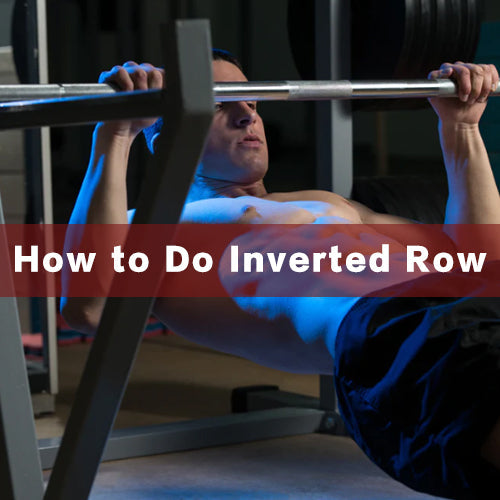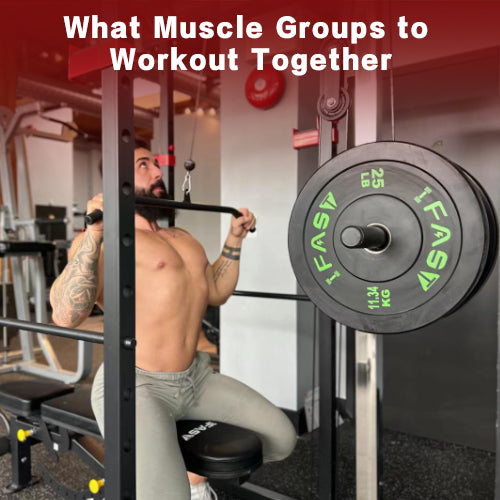The Romanian deadlift, often abbreviated as RDL, is a powerful and versatile exercise that targets the muscles of the lower body, particularly the hamstrings, glutes, and lower back. It is a popular strength-building exercise among athletes, weightlifters, and fitness enthusiasts due to its effectiveness in developing posterior chain strength and enhancing athletic performance. In this comprehensive guide, we will delve into the proper form and technique of the Romanian deadlift, its benefits for muscle development and functional fitness, and how to incorporate it into your workout routine for maximum results.
How to do RDL
Performing the Romanian deadlift with proper form is essential to prevent injury and optimize its muscle-building benefits. Follow these step-by-step instructions:

1.Starting Position
Stand with your feet shoulder-width apart and your toes pointing slightly outward.
Hold a barbell or dumbbells with an overhand grip (palms facing your body) in front of your thighs.
2.Hip Hinge
Initiate the movement by hinging at your hips, pushing your hips back while maintaining a neutral spine.
Keep your chest lifted and your shoulders pulled back throughout the exercise.
3.Descend
Lower the weight towards the ground, allowing it to slide down your thighs while keeping it close to your body.
The movement should be controlled and deliberate, focusing on the stretch in your hamstrings.
4.Maintain Core Engagement
Keep your core muscles engaged to stabilize your spine and prevent excessive arching of your lower back.
5.Controlled Ascent
As you reach the bottom of the movement, drive your hips forward and stand up tall, extending your hips and squeezing your glutes.
Keep the weight close to your body throughout the ascent.
6.Repeat
Perform the desired number of repetitions, typically 8-12 per set, depending on your training goals and fitness level.
RDL Muscles Worked
The Romanian deadlift is a highly effective compound exercise that engages multiple muscle groups in the body. Here are the primary muscles worked during the Romanian deadlift:

Hamstrings
The hamstrings, located at the back of the thighs, are the primary muscles targeted during the Romanian deadlift. They play a crucial role in extending the hip joint and bending the knee, which is the primary movement in the RDL.
Glutes
The gluteal muscles, including the gluteus maximus, gluteus medius, and gluteus minimus, are also heavily involved in the Romanian deadlift. These muscles work in conjunction with the hamstrings to extend the hips during the movement.
Erector Spinae
The erector spinae muscles, which run along the length of the spine, are responsible for maintaining a neutral spine position during the Romanian deadlift. They provide stability and support to the lower back throughout the exercise.
Lower Back
In addition to the erector spinae, the lower back muscles play a significant role in stabilizing the spine during the RDL. They work synergistically with the glutes and hamstrings to maintain proper posture and prevent excessive rounding of the back.
Quadriceps
While the hamstrings are the primary movers in the Romanian deadlift, the quadriceps, located at the front of the thighs, also contribute to knee extension during the standing phase of the movement.
Calves
The calf muscles, specifically the gastrocnemius and soleus, assist in stabilizing the ankles during the Romanian deadlift.
RDL Vs Deadlift
1.Movement
Romanian Deadlift: The RDL is a hip-hinge movement where the hips are pushed back while maintaining a slight bend in the knees. The focus is on hinging at the hips and lowering the weight down the thighs, feeling a deep stretch in the hamstrings, before returning to a standing position with the hips fully extended.
Deadlift: The conventional deadlift is a more complex movement that starts from a squatting position. It involves lifting the weight from the floor to a standing position with the hips and knees fully extended. The deadlift requires a combination of hip hinge and knee extension, making it a more comprehensive full-body exercise.
2.Muscles Worked
Romanian Deadlift: The RDL primarily targets the hamstrings, glutes, and lower back. It places more emphasis on the posterior chain muscles, with the hamstrings being the main driver of the movement.
Deadlift: The conventional deadlift engages a wide range of muscles, including the hamstrings, glutes, lower back, upper back (trapezius and rhomboids), quadriceps, core muscles, and grip strength. It is often referred to as a total-body exercise due to the involvement of multiple muscle groups.
3.Range of Motion
Romanian Deadlift: The RDL has a more limited range of motion compared to the deadlift. The weight is lowered to the mid-shin level or slightly below, depending on individual flexibility.
Deadlift: The deadlift involves lifting the weight from the floor, requiring a full range of motion from the ground to a standing position.
4.Training Focus
Romanian Deadlift: The RDL is commonly used to target the hamstrings and glutes specifically. It is often included in lower body workouts and is useful for improving hip hinge mechanics and strengthening the posterior chain.
Deadlift: The deadlift is a foundational strength exercise used to develop overall strength and power. It is often included in strength training and powerlifting routines to build overall muscle mass and improve functional strength.

5.Difficulty Level
Romanian Deadlift: The RDL is generally considered less technically demanding than the deadlift. It allows for a more controlled movement pattern and is often used as a progression towards the conventional deadlift.
Deadlift: The deadlift requires more technical skill and is considered one of the more challenging compound lifts. Proper form and technique are essential to perform the movement safely and effectively.
Both the RDL and Deadlift are valuable exercises for building strength and targeting multiple muscle groups. The RDL is excellent for isolating the hamstrings and glutes, making it a suitable choice for individuals looking to strengthen the posterior chain. On the other hand, the deadlift is a more comprehensive full-body exercise that engages a wider range of muscles. Both exercises can be incorporated into a well-rounded strength training routine, depending on individual fitness goals and training preferences.
Romanian Deadlift vs Stiff Leg Deadlift
1.Movement
Romanian Deadlift: In the RDL, the movement starts with a hip hinge, and the hips are pushed back while maintaining a slight bend in the knees. The barbell or dumbbells are lowered down the thighs until you feel a deep stretch in the hamstrings. The RDL emphasizes the hip hinge pattern and eccentric loading of the hamstrings.
Stiff Leg Deadlift: The SLDL also starts with a hip hinge, but the knees are kept fully extended throughout the movement. The barbell or dumbbells are lowered down the front of the legs until you feel a stretch in the hamstrings. The SLDL emphasizes the stretch on the hamstrings and glutes without knee bending.
2.Knee Flexion
Romanian Deadlift: In the RDL, the knees maintain a slight bend throughout the movement. This slight knee flexion allows for a more comfortable range of motion and puts less stress on the lower back.
Stiff Leg Deadlift: In the SLDL, the knees remain fully extended throughout the movement, which increases the stretch on the hamstrings and places more emphasis on their activation.

3.Target Muscles
Romanian Deadlift: The RDL primarily targets the hamstrings and glutes, while also engaging the lower back and core for stabilization.
Stiff Leg Deadlift: The SLDL also targets the hamstrings and glutes, but the emphasis on keeping the knees straight places more focus on the hamstrings.
4.Back Position
Romanian Deadlift: In the RDL, the back remains flat and neutral throughout the movement, and the emphasis is on hinging at the hips.
Stiff Leg Deadlift: In the SLDL, the back is kept straight and neutral, and the focus is on the stretch and activation of the hamstrings.
5.Difficulty Level
Romanian Deadlift: The RDL is generally considered easier to perform than the SLDL due to the slight knee flexion, which provides more stability and reduces the risk of strain on the lower back.
Stiff Leg Deadlift: The SLDL is more challenging, as it requires greater hamstring flexibility and places more demand on the posterior chain without the assistance of knee flexion.
Romanian Deadlift Alternative
1.Glute Bridge

The glute bridge primarily targets the glutes and hamstrings. Lie on your back with knees bent and feet flat on the floor. Lift your hips off the ground by squeezing your glutes, creating a straight line from your shoulders to your knees.
2.Good Mornings

Good mornings focus on the lower back and hamstrings. Stand with feet shoulder-width apart, place a barbell across your upper back, and hinge forward at the hips while keeping your back straight.
3.Barbell Hip Thrusts

This exercise is excellent for targeting the glutes and hamstrings. Sit on the ground with your back against a bench, place a barbell over your hips, and lift your hips off the ground, driving through your heels.
4.Kettlebell Swings

Kettlebell swings engage the entire posterior chain, including the hamstrings, glutes, and lower back. Perform a hip-hinge movement to swing the kettlebell to shoulder height.
5.Leg Curl (Machine or Stability Ball)

Leg curls isolate the hamstrings and can be done using a leg curl machine or a stability ball.


